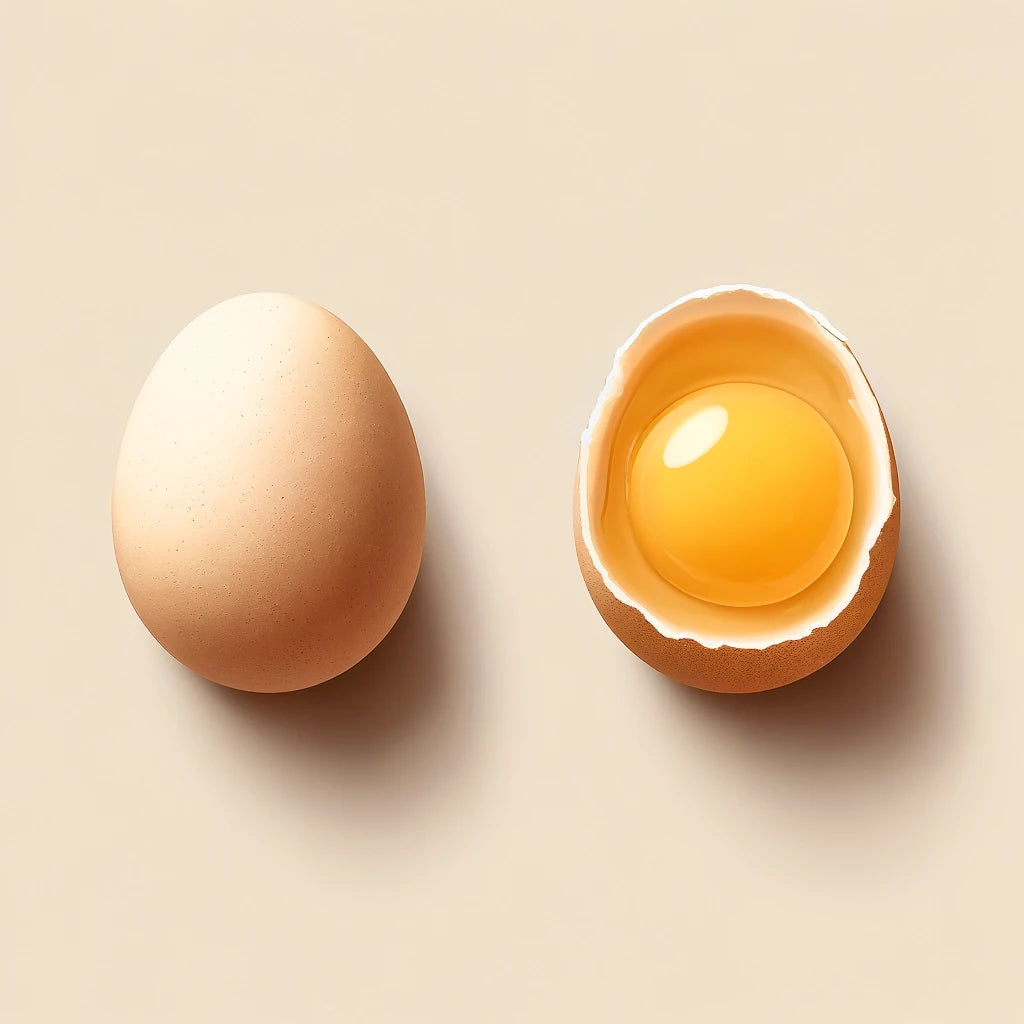Fertilized Eggs: Nature's Incubation Marvel
Fertilized eggs hold the miracle of potential life. Unlike unfertilized eggs, these are eggs that have been inseminated by a male. The primary distinction lies in their capability to develop into an embryo. This process is a wonder of nature, where the fertilized egg under the right conditions, such as temperature and humidity, can eventually hatch into a chick.
The Journey from Egg to Chick
The development of a chick from a fertilized egg is a step-by-step process that begins with incubation. This period is critical, as it requires a constant temperature and humidity to mimic the natural warmth provided by a hen. The embryo goes through various stages of development, transforming from a tiny dot into a fully formed chick ready to hatch.
For more insights on the benefits of natural feeds during the incubation process, explore GrubTerra's Black Soldier Fly Larvae, a superior choice for sustainable poultry nutrition.

Nutritional and Health Aspects
When it comes to nutrition, fertilized eggs are often thought to offer superior benefits compared to their unfertilized counterparts. However, studies suggest that the nutritional content between the two types of eggs is relatively similar. Both contain essential vitamins, minerals, and a good balance of fats and proteins. Discover the importance of providing high-quality feed from GrubTerra to ensure the healthiest eggs possible.
Ethical and Cultural Perspectives
In various cultures, fertilized eggs are preferred for their perceived health benefits or are part of traditional dishes. However, ethical considerations come into play regarding the hatching potential of these eggs. It's essential to source fertilized eggs responsibly, ensuring they are collected from farms that prioritize animal welfare. Learn more about ethical farming practices at GrubTerra's Blog.
Unfertilized Eggs: A Culinary Staple
Unfertilized eggs are the type most commonly found in grocery stores and used in everyday cooking. These eggs are laid by hens that have not been in contact with a rooster, meaning they lack the potential to develop into an embryo.
The Role in Cooking and Baking
Unfertilized eggs are a cornerstone in both cooking and baking. They act as binders in recipes, contribute to the structure of baked goods, and are a key ingredient in countless dishes worldwide. Their versatility in the kitchen is unmatched.
Nutritional Value
Like fertilized eggs, unfertilized eggs are a powerhouse of nutrition. They are an excellent source of high-quality protein, vitamins like B12 and D, minerals such as selenium and phosphorus, and antioxidants. Including eggs in your diet can contribute to a healthy and balanced nutrition.
Sustainability and Production
The production of unfertilized eggs is a significant part of the agriculture industry. With advancements in farming practices, it's now easier to manage the environmental impact of egg production. Sustainable practices, including improved feed efficiency and waste management, play a crucial role in reducing the carbon footprint associated with egg production.
Frequently Asked Questions
What makes an egg fertilized or unfertilized?
An egg becomes fertilized when it's inseminated by a male before being laid. In contrast, an unfertilized egg is laid without male contact.
Can you eat fertilized eggs?
Yes, fertilized eggs can be eaten. There's no significant difference in taste or nutritional value compared to unfertilized eggs.
How can you tell the difference between fertilized and unfertilized eggs?
Without incubation, it's challenging to differentiate between fertilized and unfertilized eggs. Candling, a process of shining a light through the egg, can sometimes reveal the development of an embryo in fertilized eggs.
Are fertilized eggs more nutritious?
The nutritional content of fertilized and unfertilized eggs is virtually the same. Both types provide a rich source of nutrients essential for a healthy diet.
Is there any benefit to choosing one type of egg over the other?
The choice between fertilized and unfertilized eggs often comes down to personal preference, ethical considerations, or dietary restrictions. Nutritionally, they offer similar benefits.
How does egg incubation work?
Incubation requires maintaining a specific temperature and humidity level for about 21 days. This environment mimics the conditions under a brooding hen, allowing a fertilized egg to develop into a chick.
Conclusion
Whether fertilized or unfertilized, eggs remain a nutritious and versatile ingredient in diets worldwide. Understanding the distinctions between the two can enhance our appreciation for this remarkable food source. As we navigate choices around ethical sourcing and sustainability, it's vital to support practices that respect animal welfare and environmental health. For more insightful information on sustainable practices and nutritional benefits of different types of eggs, visit GrubTerra.
Eggs, regardless of their fertilization status, offer a unique combination of nutrition, versatility, and culinary delight. They symbolize the beauty of nature's design and humanity's ingenuity in harnessing its bounty for nourishment and pleasure.


